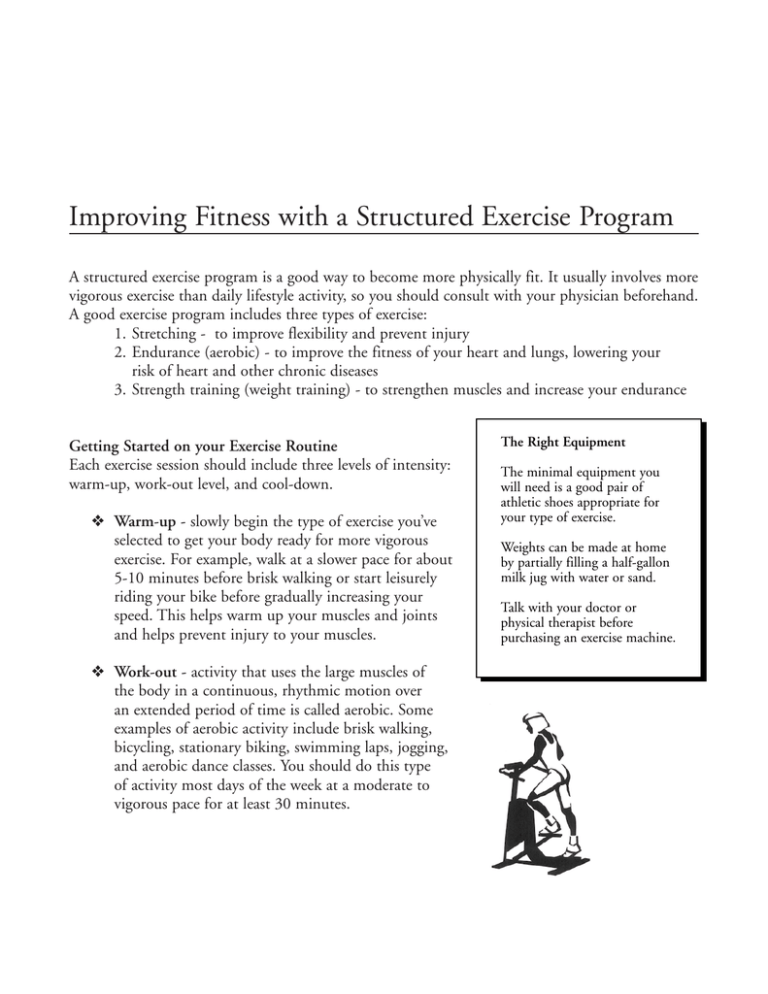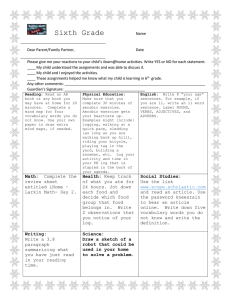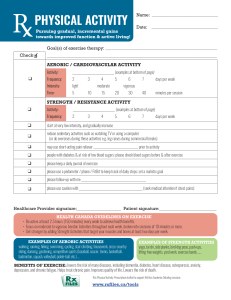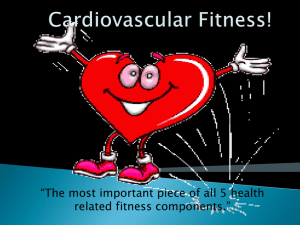Improving Fitness with a Structured Exercise Program
advertisement

Improving Fitness with a Structured Exercise Program A structured exercise program is a good way to become more physically fit. It usually involves more vigorous exercise than daily lifestyle activity, so you should consult with your physician beforehand. A good exercise program includes three types of exercise: 1. Stretching - to improve flexibility and prevent injury 2. Endurance (aerobic) - to improve the fitness of your heart and lungs, lowering your risk of heart and other chronic diseases 3. Strength training (weight training) - to strengthen muscles and increase your endurance Getting Started on your Exercise Routine Each exercise session should include three levels of intensity: warm-up, work-out level, and cool-down. ❖ Warm-up - slowly begin the type of exercise you’ve selected to get your body ready for more vigorous exercise. For example, walk at a slower pace for about 5-10 minutes before brisk walking or start leisurely riding your bike before gradually increasing your speed. This helps warm up your muscles and joints and helps prevent injury to your muscles. ❖ Work-out - activity that uses the large muscles of the body in a continuous, rhythmic motion over an extended period of time is called aerobic. Some examples of aerobic activity include brisk walking, bicycling, stationary biking, swimming laps, jogging, and aerobic dance classes. You should do this type of activity most days of the week at a moderate to vigorous pace for at least 30 minutes. The Right Equipment The minimal equipment you will need is a good pair of athletic shoes appropriate for your type of exercise. Weights can be made at home by partially filling a half-gallon milk jug with water or sand. Talk with your doctor or physical therapist before purchasing an exercise machine. ❖ Cool-down - Continue your activity at a much slower pace for about 5-10 minutes to gradually bring your heart rate back to normal. You can also do strength training or weight lifting 2-3 times per week during this time. Be sure to finish with stretching exercises to keep you flexible and help prevent injuries. Determining the Intensity of Your Workout The “talk test” is the simplest way to tell if your level of activity is too challenging or needs to be increased. You should be able to talk to someone while exercising. So, if you’re too out of breath to talk, you need to slow down. You can also use a formula to calculate your target heart rate. You can then test your pulse while you’re exercising to see if you’re exercising at the right pace. For moderate intensity, you should exercise at 55- 65% of your maximal heart rate for your age group (see box). Be sure to check with your doctor before using this formula. Some heart and blood pressure medications can change your target heart range. Determining DeterminingYour Your Target Target Heart Rate for Exercise Heartrate for Exercise 1.1. Subtract Subtractyour yourage agefrom from220 220to toget get your yourmaximal maximalheart heartrate rate(MHR). (MHR). 2.2. Multiply MultiplyMHR MHRby by55% 55%(.55) (.55)and and by 65% (.65) to get the lower by 65% (.65) to get the lowerand and upper upperpart partofofyour yourtarget targetheart heartrange. range. 3.3. Test Testyour yourpulse pulseatatyour yourwrist wristor orneck neck for 10 seconds immediately after for 10 seconds immediately afteryou you stop stopexercising. exercising.Multiply Multiplythis thisnumber number by by66to todetermine determineififyour yourheart heartrate rate is1is inin your target range. your target range. Tips to Keep Your Exercise Routine Going ❖ ❖ ❖ ❖ Plan your exercise program into your schedule Keep a diary or log to chart your progress Start slowly and gradually build up to your goal. Include variety in your exercises to keep your interest and to prevent muscle and joint soreness or injury. THE UNIVERSITY OF GEORGIA AND FT. VALLEY STATE UNIVERSITY, THE U.S. DEPARTMENT OF AGRICULTURE AND COUNTIES OF THE STATE COOPERATING. The Cooperative Extension Service offers educational programs, assistance and materials to all people without regard to race, color, national origin, age, sex or disability. AN EQUAL OPPORTUNITY EMPLOYER/AFFIRMATIVE ACTION ORGANIZATION. Janine Freeman, RD, LD, CDE Extension Nutrition Specialist July 2001 Publication Number: FDNS-E-61





